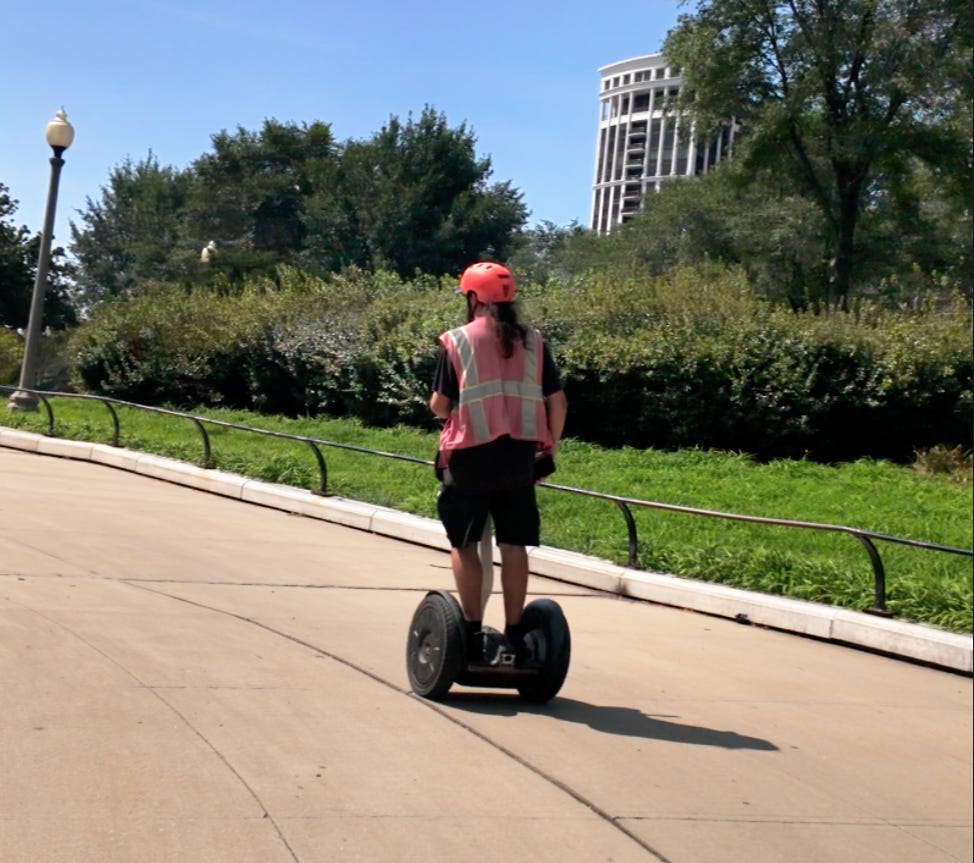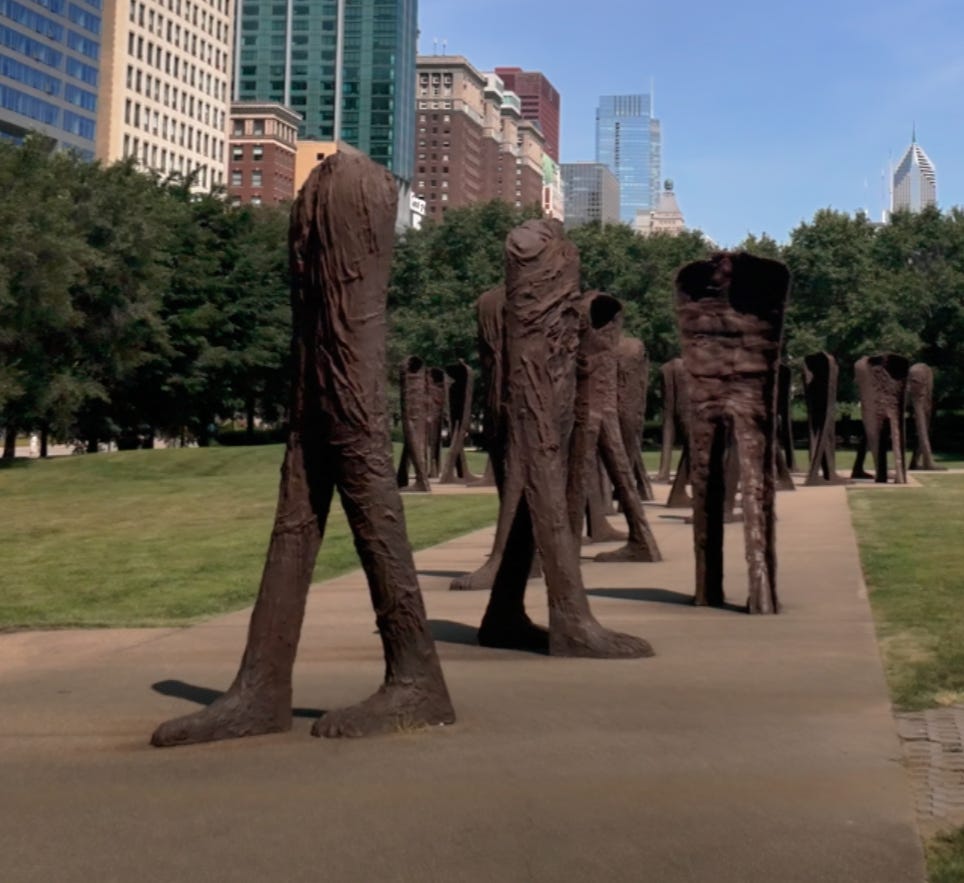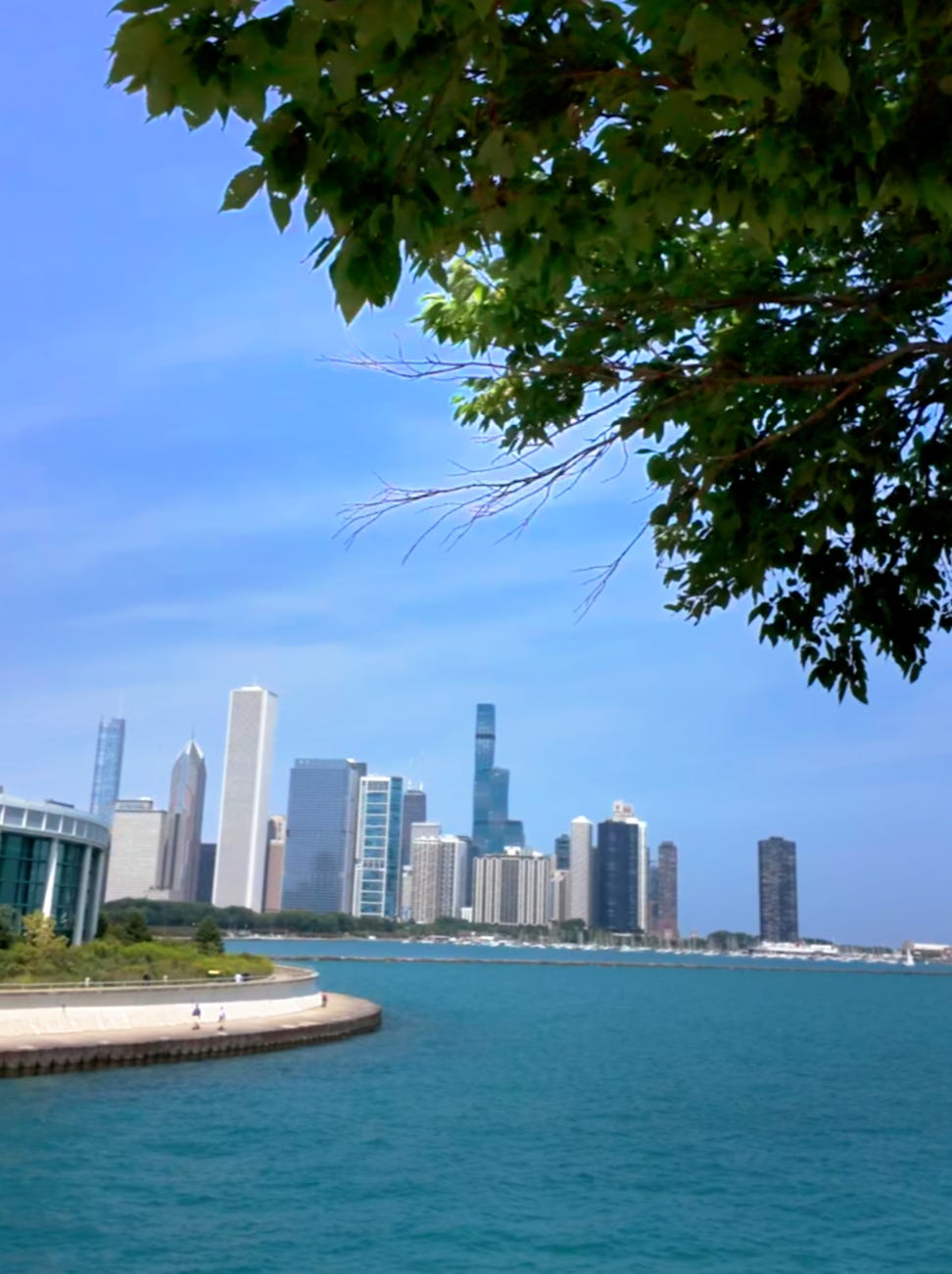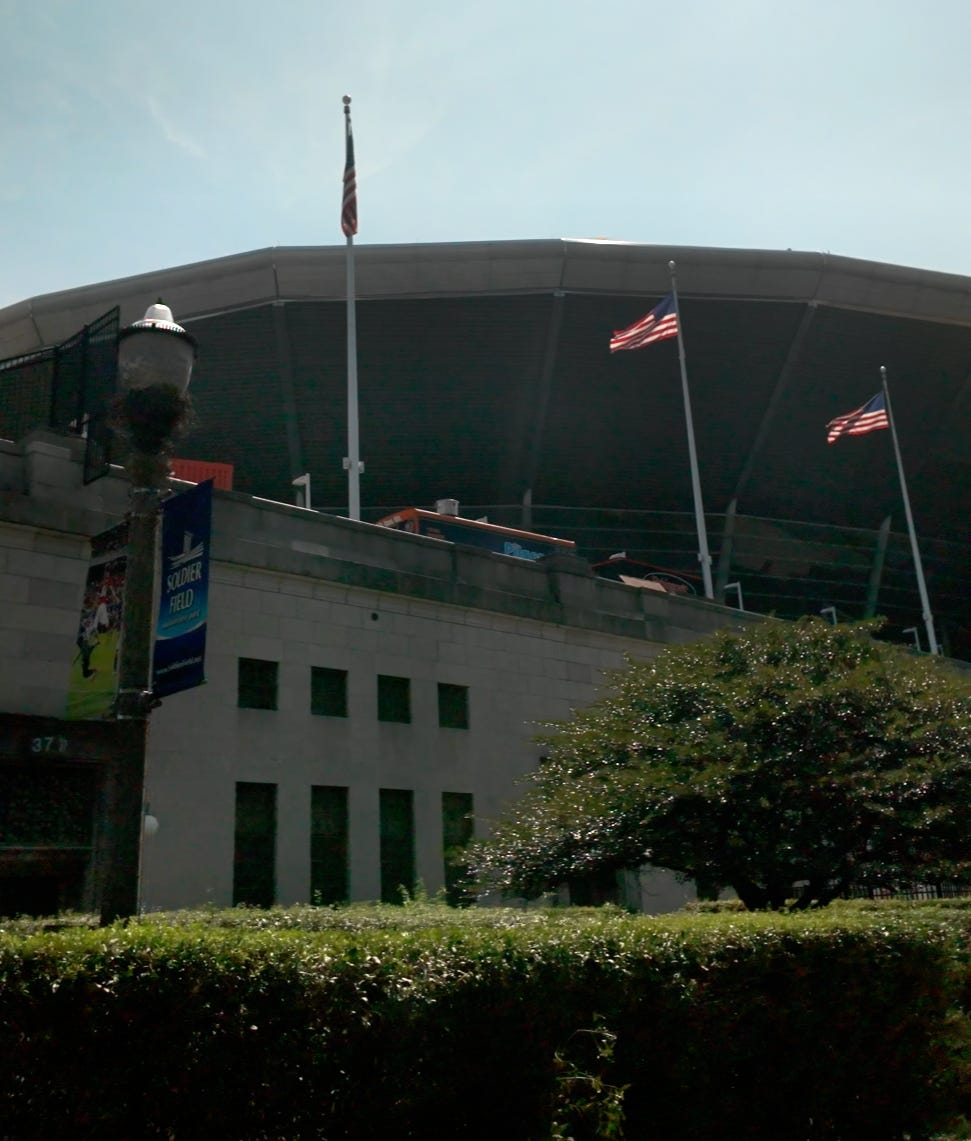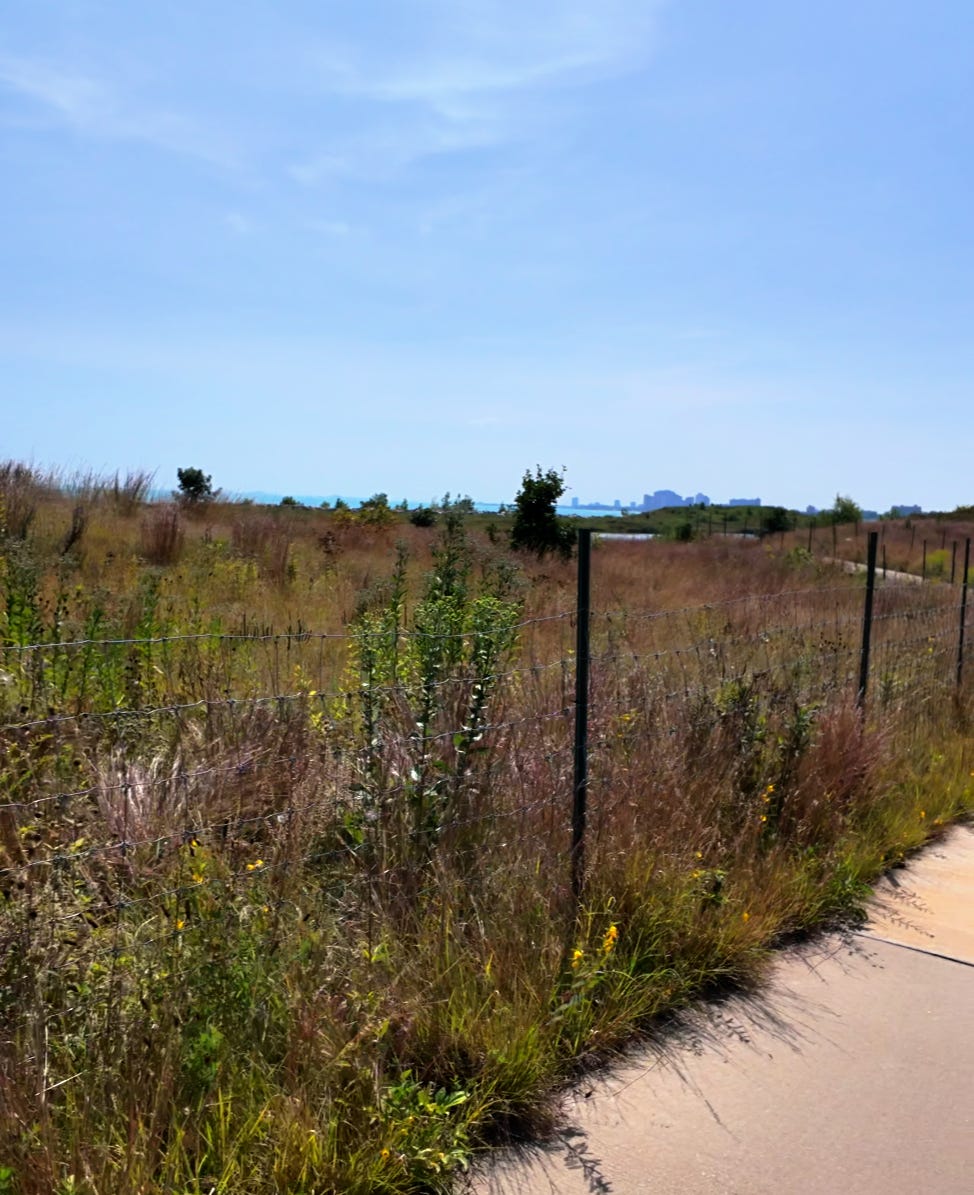Exploring Chicago by Segway might not be the most traditional way to see the city, but it’s definitely memorable. At $65 a person, the tour took us through the South Side, gliding between iconic landmarks, peaceful parks, and beautiful Midwest architecture.
But it wasn’t totally smooth sailing since considering my spectacular Segway wipeout. But what’s a little road rash when you’re cruising through history?
The Tour
First things first, the tour’s starting point isn’t exactly Instagram-worthy. The office where we kicked things off was, frankly, a mess. Trash was piling up, Segway parts were scattered like a chop shop, and the bathroom in the back had probably seen better days—or not. It wasn’t the kind of place that fills you with confidence about the state of the equipment. But we pushed through, signed the waivers, and got rolling.
Once we were out and about, it was clear the guide knew what he was doing, and despite the initial impressions, the experience quickly improved. Learning to ride a Segway took a bit of adjusting—you have to lean forward to go faster, which feels wrong when your brain is screaming, “No, lean back!”—but we got the hang of it, mostly. Well, until I didn’t.
We saw too many things to really highlight in a review, but these were our top experiences.
Our first stop was Grant Park’s Agora Statues, a collection of 106 iron giants without heads or arms. These faceless figures are kind of eerie, frozen mid-stride like they’re in some post-apocalyptic parade. Polish artist Magdalena Abakanowicz, who grew up during World War II, said that her art draws on her fear of crowds, which she once described as "brainless organisms acting on command, worshiping on command and hating on command” which definitely makes you think a bit deeper as you zip around them on a Segway. It reminded me of the Holocaust memories all over Berlin and it’s really haunting to be flanked by these tall headless statues when you walk, or ride, through it.
From the statues, we cruised over to Museum Campus, home to the Field Museum, Adler Planetarium, the Shedd Aquarium and some impressive views of the city’s skyline.
This is one of those areas where you really get a sense of how Chicago seamlessly blends culture and nature. The views of Lake Michigan, the green space, and the city’s impressive skyline are all just... right there.
The guide shared a fun tidbit about the Shedd Aquarium that never occurred to someone like me who grew up and still lives near the ocean.
When Shedd Aquarium opened in 1930, they had to ship saltwater all the way from Florida to keep the marine life alive.
It turns out that creating saltwater is more complicated than just adding a pinch of salt to a bucket. Thankfully, they’ve long since figured out how to mix their own, but it’s a fascinating piece of history that adds depth to what could otherwise feel like “just another aquarium.”
While we didn’t have time to dive deep into all the museums (no pun intended), just getting a sense of how big Museum Campus is was valuable. And honestly, seeing it all from a Segway made it feel way more manageable than it would have on foot.
Next up was Soldier Field, home of the Chicago Bears and a stadium with nearly a century of history.
Opened in 1924 as a memorial to American soldiers, it’s one of the oldest NFL stadiums still in use today.
That is, of course, if you can get past the 2003 renovation that left it looking like a spaceship landed on the original structure—an architectural decision that still divides opinions among locals.
From here, the skyline was a constant companion, and at each stop, we were reminded of why Chicago’s architecture is world-famous. Soldier Field may have its quirks, but with the skyscrapers in the background and Lake Michigan on the horizon, it’s a great photo spot.
And then came Northerly Island, the absolute highlight of the tour. I never even knew it existed since there are so many parks in Chicago, but as soon as we rolled onto its quiet paths, it became the clear favorite. Originally home to Meigs Field Airport, this 91-acre peninsula has been transformed into a nature park, and it feels like you’ve stumbled into a hidden oasis steps from the hustle of the city. It’s the kind of place you could easily miss if you didn’t know it was there, but once you find it, you’re hooked.
The transformation of Northerly Island from an airport to a nature preserve is one of Chicago’s more dramatic pieces of local history.
In 1994, Mayor Richard M. Daley announced plans to close Meigs Field and transform Northerly Island into a park. After the airport’s lease expired in 1996, the city briefly shut it down but reopened under pressure from state lawmakers. Then, in a bold move on the night of March 30, 2003, Daley ordered crews to bulldoze X-shaped gashes into the runway, making it unusable. He defended the decision as a safety measure post-9/11.
The result, however, is this peaceful retreat, complete with wildflower meadows, open spaces, and stunning views of Lake Michigan. It’s also a favorite spot for migratory birds, which makes it feel even more removed from the steel and glass of the skyline just beyond.
Riding through Northerly Island was where the Segway really came into its own. The long, winding paths were perfect for picking up speed, and gliding through the natural landscape at a faster pace was pure fun—though not without its risks.
Finally, as we left Northerly Island to circle back to end the tour, we passed 12th Street Beach, a tiny, tucked-away spot along the lakefront that offers a peaceful break from the city. We didn’t have time to linger, but if you’re looking for a less-crowded spot to relax with a view of the skyline, it’s worth keeping in mind.
But the tour wasn’t without its fair share of hiccups. It’s easy to feel a false sense of Segway mastery during the tour, but it turns out you can still wipe out rather easily if you’re not paying attention or need to stop suddenly. Another rider accidentally cut me off, and when I tried to stop but couldn’t remember to lean back in that split second our wheels touched, I found myself flying forward over the handlebars. I won’t lie—it wasn’t my finest moment. I scraped up my knee and arm but didn’t want to end the tour for everyone else.
Did you know the inventor of the Segway, Jimi Heselden, tragically died in 2010 when he accidentally drove a Segway off a cliff near his home in England?
For the rest of the tour, I just ignored the blood going down my leg until the end, when we returned to the office. I tried to patch things up before we left. Unfortunately, they didn’t have a stocked first aid kit, which didn’t add to the lack of confidence I first felt when we entered the office. Luckily everyone is given helmets, and I can’t stress enough to listen to your guide, keep a safe distance from other riders, and practice stopping and turning before you get too confident. It’s easy to forget that Segways don’t stop as quickly as your instincts might think.
Final Thoughts: A 4-Out-of-5 Adventure
All in all, the Segway tour was a great way to explore a massive chunk of Chicago’s South Side in just a couple of hours. The sights, especially Northerly Island, were worth the price of admission. The guide was knowledgeable, the Segways were fun once you got used to them, and we saw more than we expected.
That said, I can’t ignore the rough start at the office and the lack of bandages in the first aid kit. I had to improvise to clean up my knee, and it was a good reminder that accidents can happen quickly—so the office could definitely be cleaned up and more welcoming.
For that reason, I’m giving the experience a solid 4 out of 5. The tour itself and the guide were excellent, but the unpolished start and lack of basic amenities dragged it down. Would I recommend it? Absolutely. But with the caveat that you go in, knowing the office will be the least impressive part of the day. Once you’re rolling, though, you’re in for a real treat—keep your distance, and for the love of Segway, wear the helmet.




